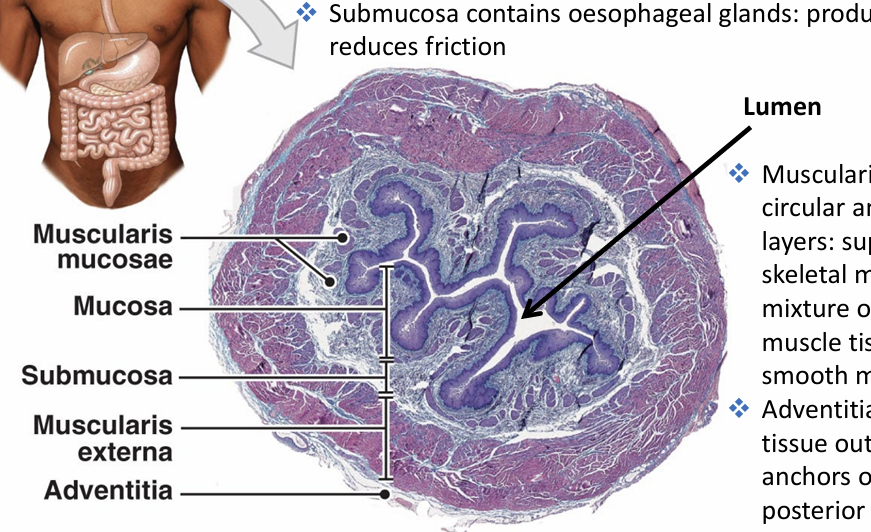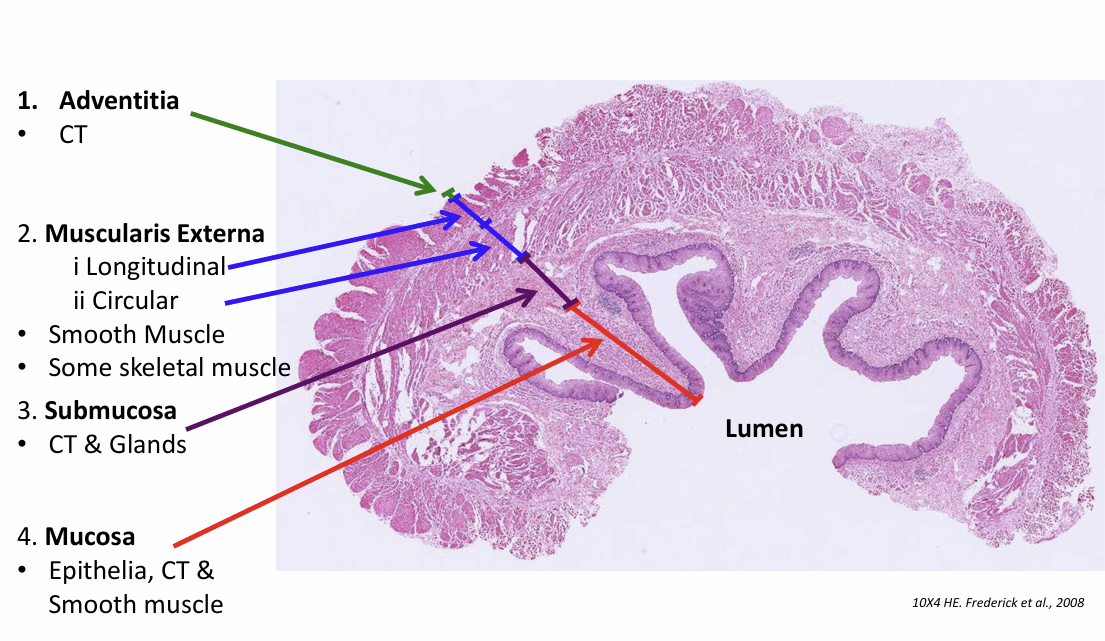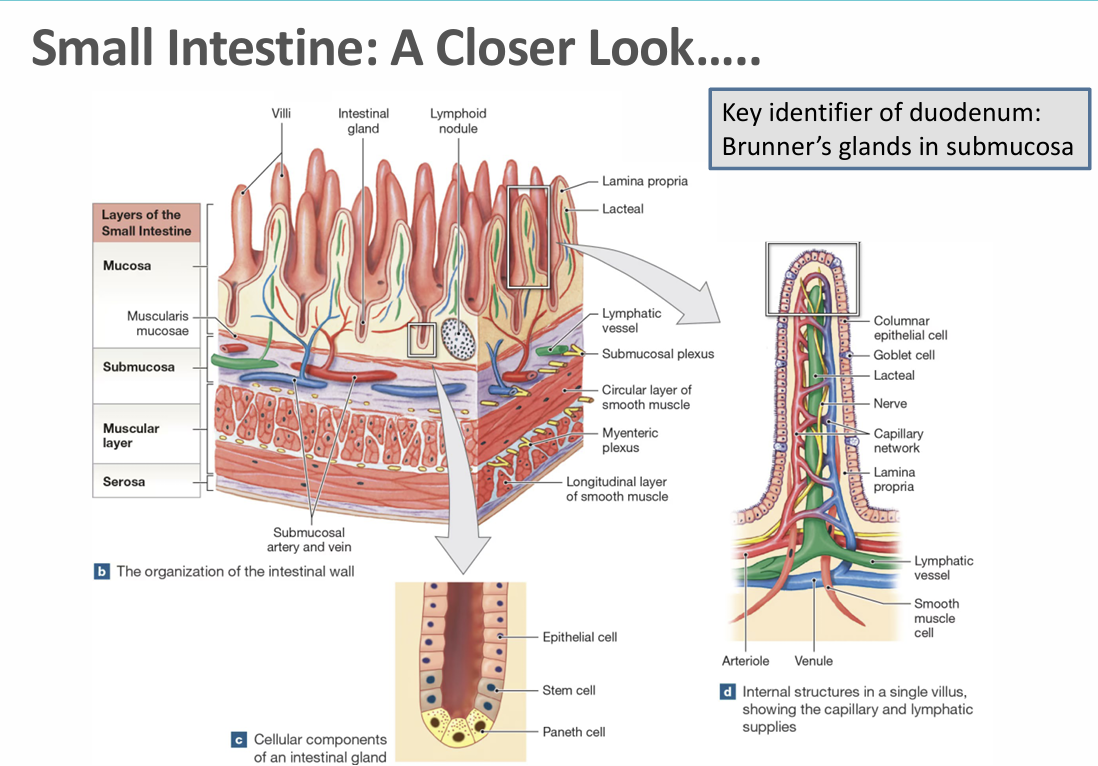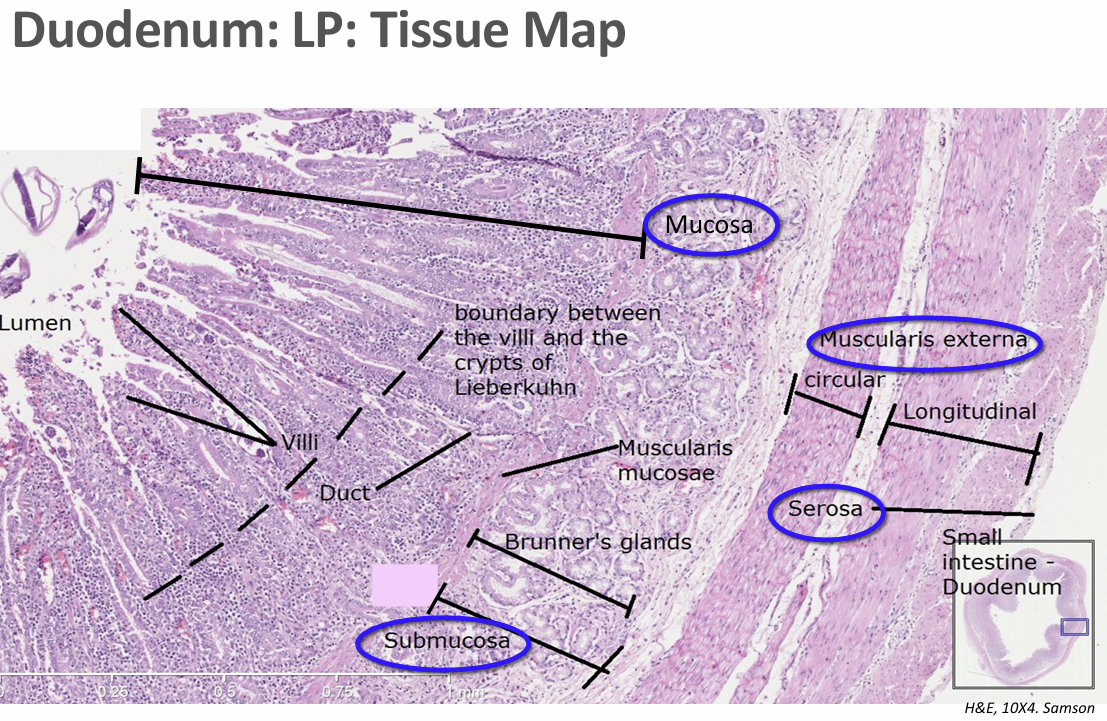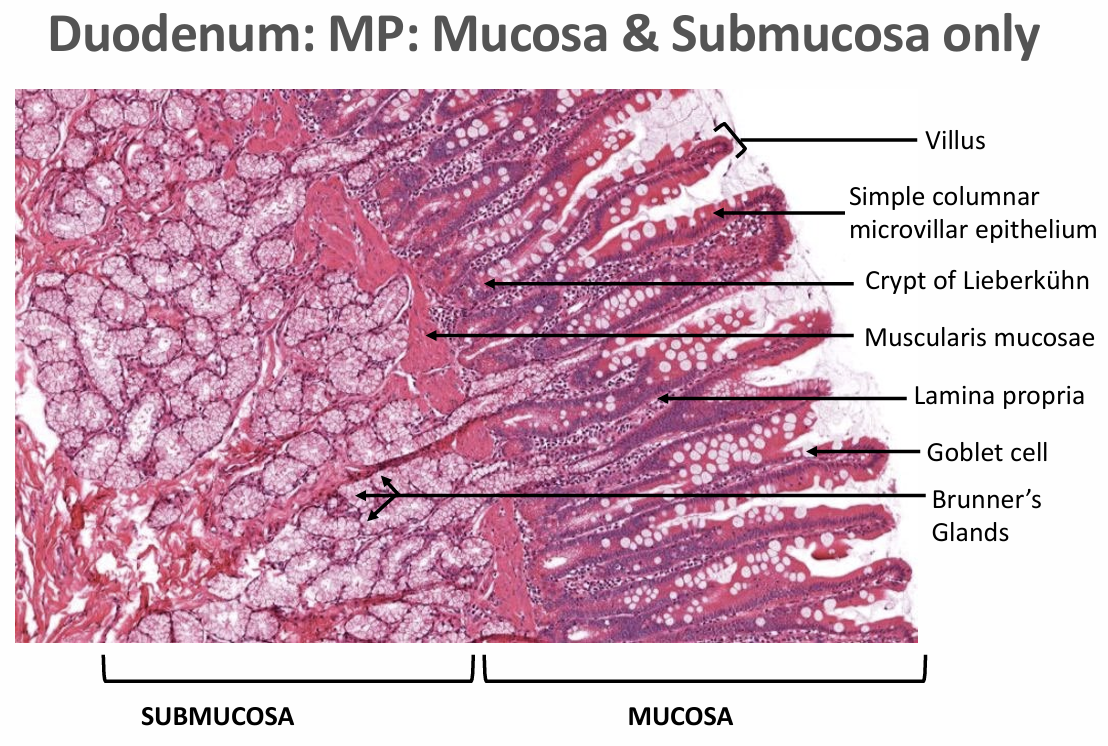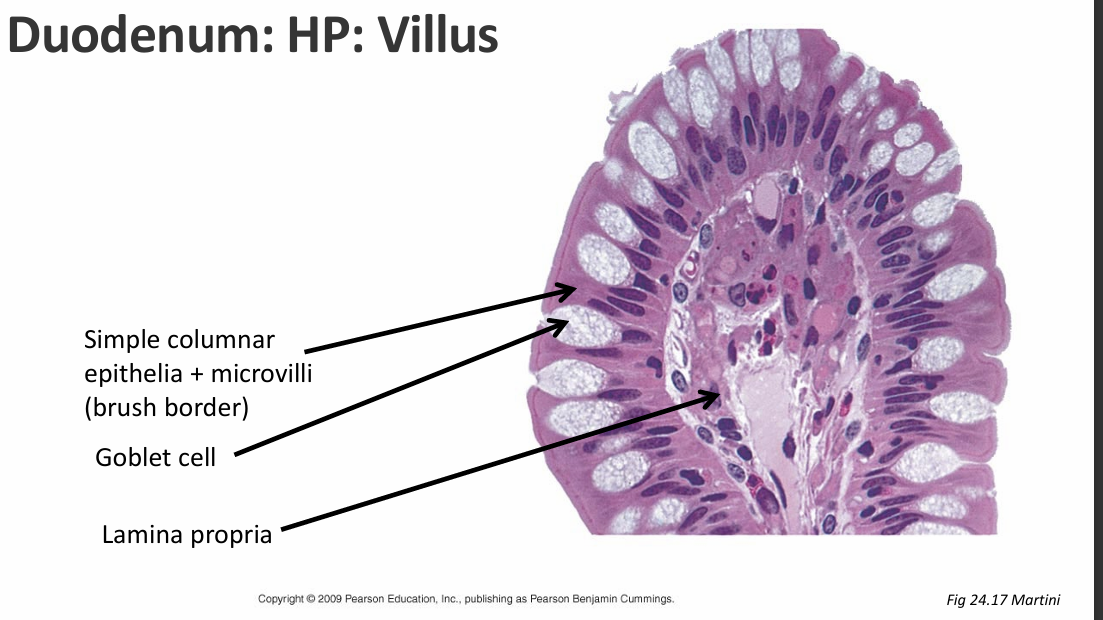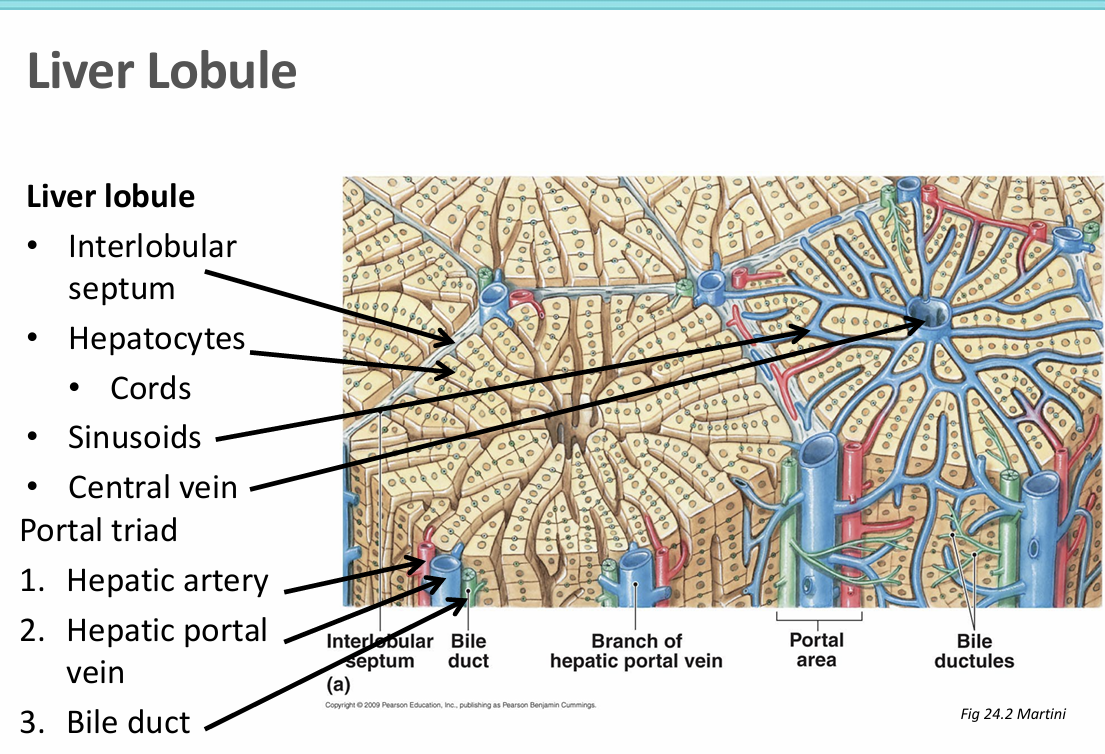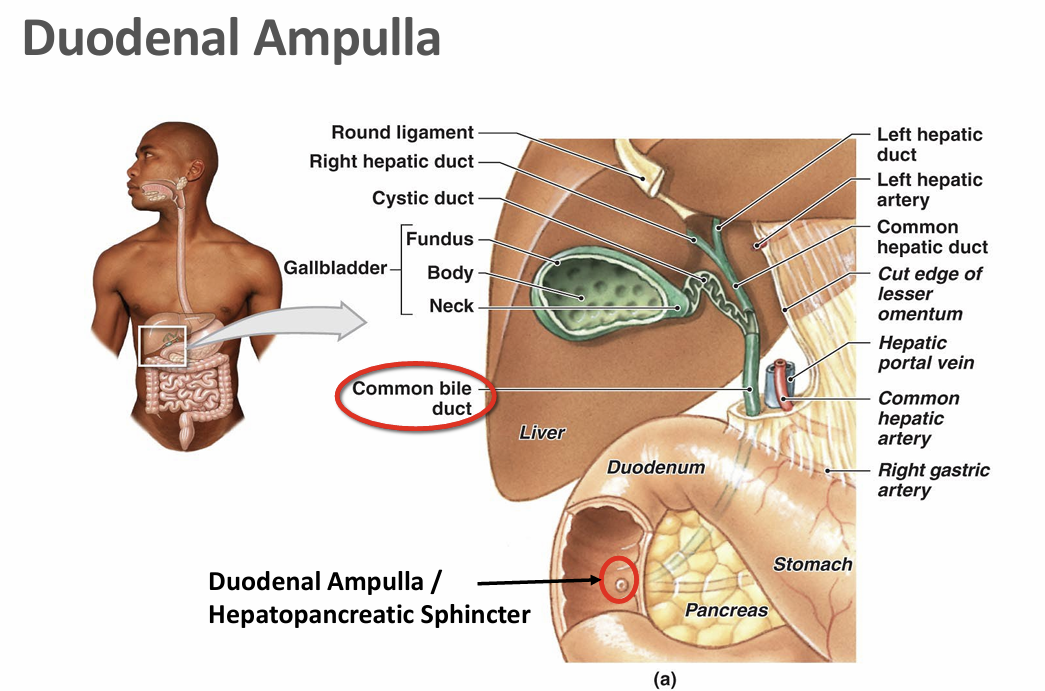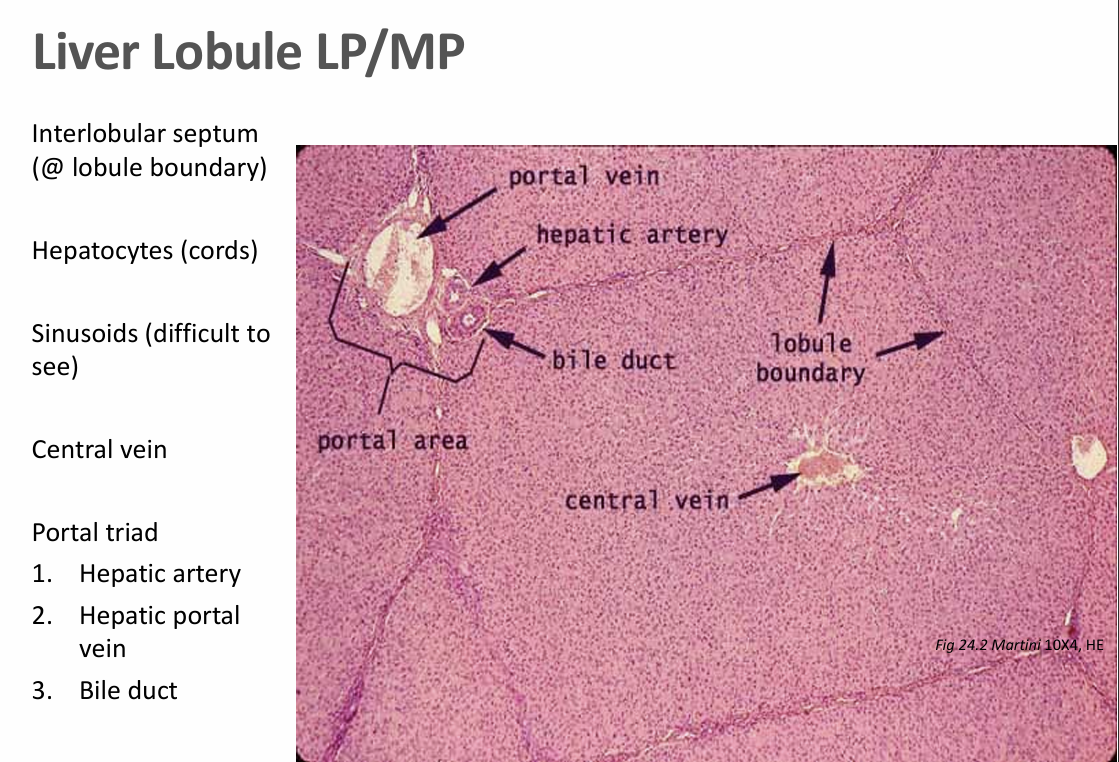Lab 5: Gastrointestinal tract
1/33
There's no tags or description
Looks like no tags are added yet.
Name | Mastery | Learn | Test | Matching | Spaced |
|---|
No study sessions yet.
34 Terms
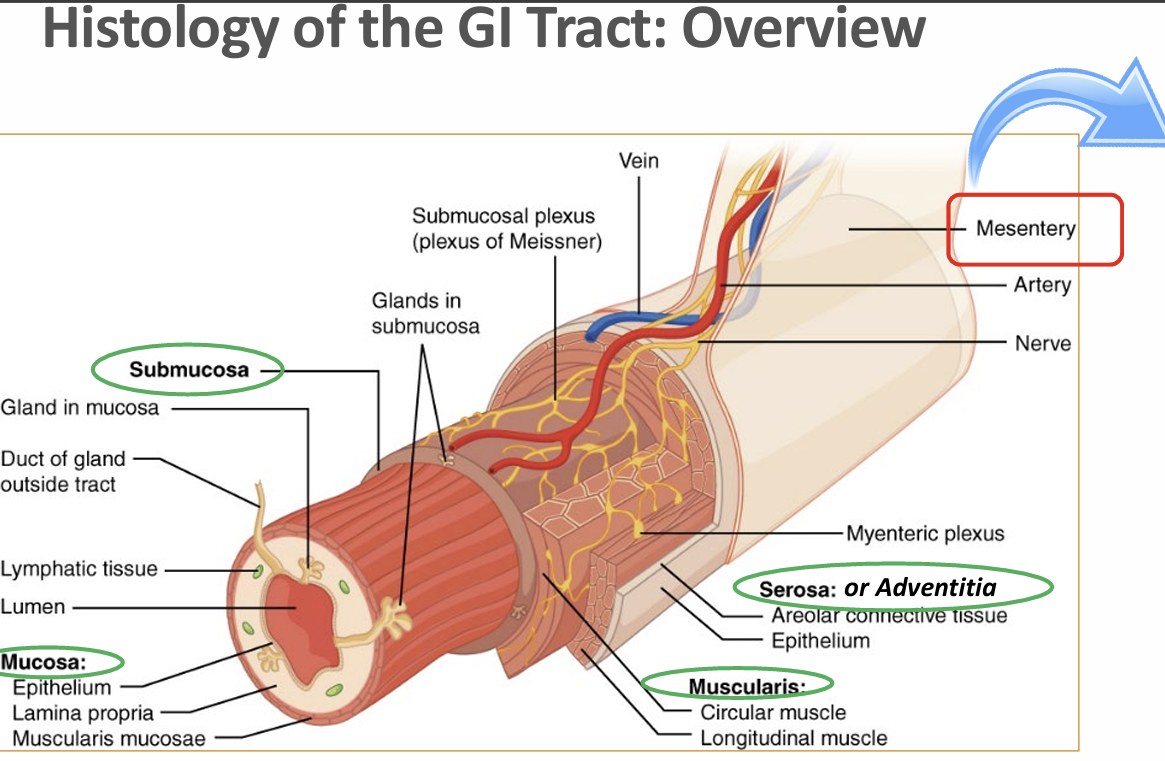
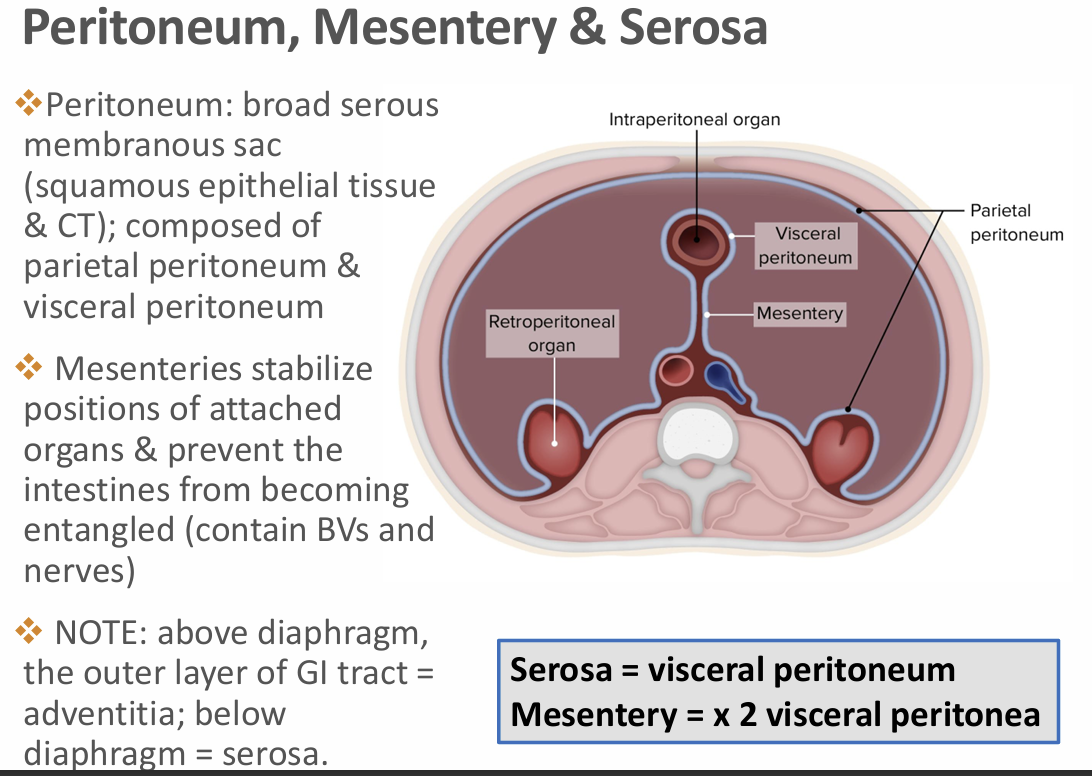
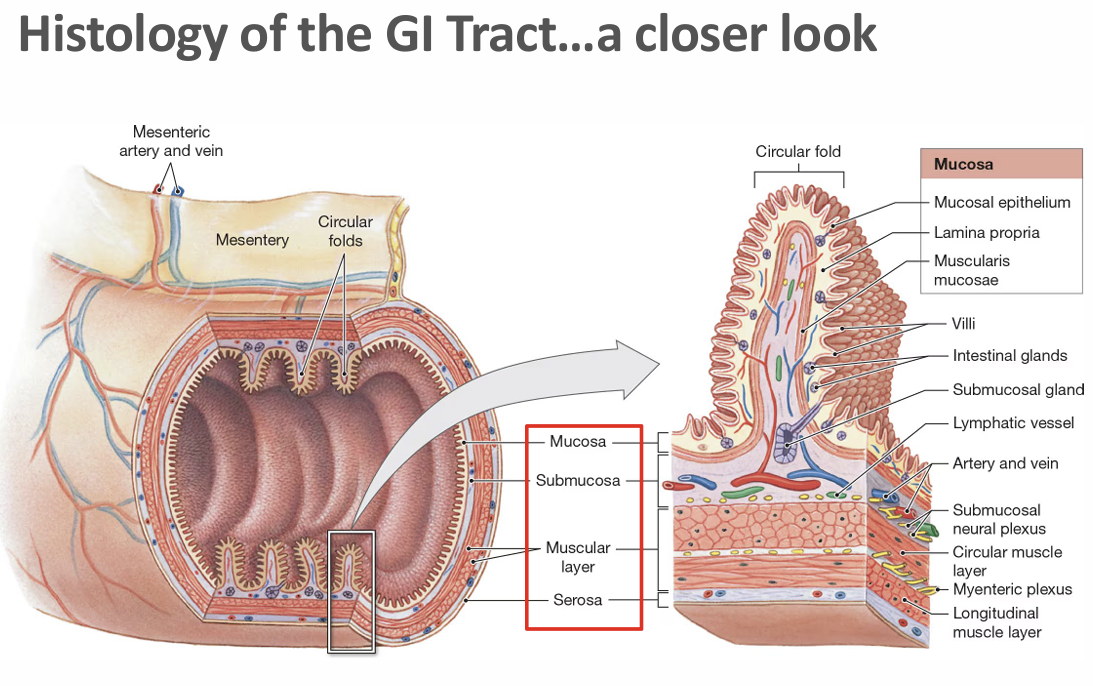
Q2: What are the folds in the epithelium called?
A. Lamina propria
B. Villi & crypts
C. Muscularis mucosae
B
Q3: Which cells are interspersed in the GI epithelium?
A. Goblet cells
B. Paneth cells
C. Schwann cells
a
Q4: The simple epithelium found in serosa is called:
A. Endothelium
B. Epithelium propria
C. Mesothelium
c
Q5: Which connective tissue layer supports the epithelium in mucosa?
A. Lamina propria
B. Submucosa
C. Adventitia
a
Q6: Submucosa contains:
A. Goblet cells
B. Arteries, veins, lymphatics, nerves, sometimes glands
C. Only muscles
b
Q7: Adventitia is:
A. Smooth muscle layer
B. Loose irregular connective tissue with blood vessels, nerves, fat
C. Same as submucosa
b
Q8: Serosa consists of:
A. Lamina propria
B. Mesothelium + thin loose connective tissue
C. Stratified squamous epithelium
b
Q9: Muscularis mucosae is:
A. Smooth muscle in mucosa
B. Skeletal muscle in rectum
C. Circular and longitudinal muscle only
a
0: Muscularis externa is:
A. Only skeletal
B. Mostly smooth (circular & longitudinal), skeletal in superior third of oesophagus
C. Only smooth
b
Q11: Sphincters contain:
A. Only skeletal
B. Both smooth and skeletal muscle
C. Only smooth
b
Q12: The Enteric Nervous System has which two plexuses?
A. Myenteric & submucosal
B. Sympathetic & parasympathetic
C. Lamina & adventitia
a
Q13: The ENS controls:
A. Blood pressure only
B. Oxygen transport
C. Motor activity of muscles & gland secretion
c
Q1: The mucosa and submucosa of the oesophagus are packed into large folds to:
A. Increase surface area for absorption
B. Allow expansion during the passage of a large bolus
C. Store mucus
D. Strengthen the oesophageal wall
b
Q2: The mucosa of the oesophagus is composed of:
A. Keratinized stratified squamous epithelium
B. Nonkeratinized stratified squamous epithelium
C. Simple columnar epithelium
D. Pseudostratified ciliated epithelium
b
Q3: The muscularis mucosae of the oesophagus consists of:
A. Skeletal muscle
B. Smooth muscle arranged irregularly
C. Longitudinal skeletal fibers
D. Cardiac muscle
b
Q4: The oesophageal glands are located in which layer?
A. Mucosa
B. Muscularis externa
C. Submucosa
D. Adventitia
c
5: What is the function of oesophageal glands?
A. Secrete enzymes for digestion
B. Produce mucus to reduce friction
C. Absorb nutrients
D. Produce hormones
b
Q6: The muscularis externa of the oesophagus is composed of:
A. Only smooth muscle
B. Only skeletal muscle
C. Inner circular and outer longitudinal layers
D. Crossed oblique muscle fibers
c
7: The superior third of the oesophageal muscularis externa contains:
A. Smooth muscle only
B. Skeletal muscle
C. A mix of smooth and skeletal muscle
D. Cardiac muscle
b
Q8: The middle third of the oesophagus contains:
A. Smooth muscle only
B. Skeletal muscle only
C. A mixture of skeletal and smooth muscle
D. Oblique smooth muscle
c
Q10: The adventitia of the oesophagus is composed of:
A. Dense regular connective tissue
B. Loose connective tissue outside the muscular layer
C. Smooth muscle
D. Serous membrane
b
Q11: The main function of the oesophageal adventitia is to:
A. Produce mucus
B. Anchor the oesophagus to the posterior body wall
C. Absorb nutrients
D. Support peristalsis
b
